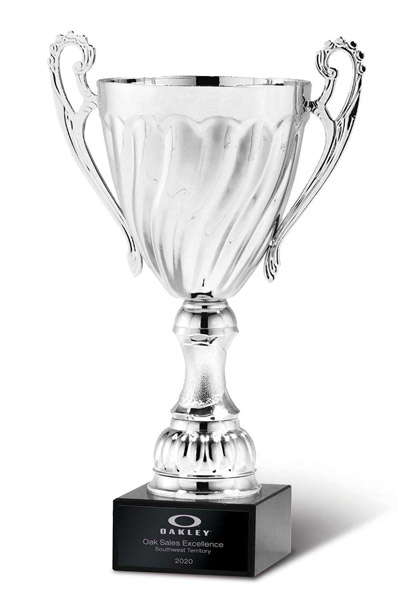With multiple material substrates and a universe of styling options, we simplify the awarding process with the best manufactures in the industry. For our full line of award products, visit PROMO PLUS.
Award Programs
Studies Show People Want and Need Recognition and
Appreciation*

-
Recognition boosts people's esteem and performance
-
Recognition signifies that someone notices and someone cares
-
Recognition is increasingly important in todays business environment
-
Recognition is not just for the person who performed well. It is also a message to other employees about the type of performance that gets noticed in an organization
Bottom line, competitive organizations need to make employees feel valued. A national survey by Robert Half International found that, ahead of compensation issues, limited praise and recognition was ranked as the primary reason why employees leave their jobs.
Applications
A recognition program of any kind and purpose can be created. The following list are the primary types applicable to the corporate environment:
-
Sales Incentives
This is the number one application for award programs -
Recognition here focuses on improving performance and self esteem
-
Service Award Programs
These are designed to positively reinforce actions that increase quality and productivity, and / or meet other corporate goals -
Safety Programs
Here the emphasis is on reducing accidents and injury costs -
Additional Applications
The reasons to recognize are endless
Buyers
With so many possible applications, many departments within a corporation have viable recognition product needs:
-
Corporate Communications for anniversaries, new buildings, mission statements, special milestones, corporate sponsored events, etc...
-
Human Resources & Training for years of service, employee of the month, perfect attendance, retirement, course completion, etc...
-
Business Operations for safety, productivity, quality, supplier recognition, etc...
-
Sales / Marketing for sales club, annual quota, distributor contests, etc...
-
Finance for budget performance, collection performance, etc...
Benefits
Non-Monetary Awards are seen by supervisors,
peers, spouses, relatives and friends. They are everlasting symbols of success; they are not spent and forgotten. Awards reflect the image of
an organization in ways that retail merchandise cannot.
success; they are not spent and forgotten. Awards reflect the image of
an organization in ways that retail merchandise cannot.
-
Display meaningful and inspirational symbols to the people involved in a particular program
-
Immediately identifiable by peers, thus reinforcing their value as builders of self-esteem and motivation
-
Cannot be purchased outside the organization, therefore, they must be earned
-
Designed to be highly personalized; not only with the recipient s name, but the name of the program and details of the accomplishment
10 Steps To Success
Typical recognition programs include the following elements:
-
Program Objective
It should be consistent with the company s values, principles and objectives for improving productivity and performance -
Program Theme
Recognition is fun. Theme ideas are endless! -
Award Period
Whatever your time period, keep the program visible with regular updates and benchmarks even mid-period awards -
Recognition Categories
Clear and definitive boundaries must be set with criteria above and beyond what is normally expected from employees -
Eligible Participants
All employees related to that department, goal, etc., must be eligible -
Program Qualifications
A recognition program must provide equal treatment for equal accomplishments -
Presentation
Recognition and rewards must be timely to the achievement. Acknowledge actions as soon as possible. Generally, public commendation is better than private -
Budget
When performance goals are met, the increased sales, profit or cost savings to the company will far exceed the cost of a recognition program -
Awards
Recognition is not compensation! Studies repeatedly show that employees rank recognition for accomplishments higher than money -
Cost Analysis
A well-structured recognition program virtually pays for itself due to increased profits, cost savings and employee morale that result from meeting program goals